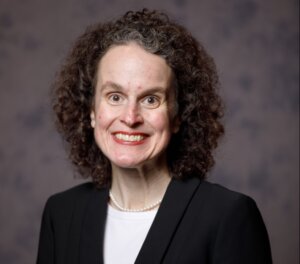
Your business is rockin’ it. Revenues are strong, and you are staying steps ahead of your competitors.
But today, your in-house accountant came to you with a mistake in your recent financial statement. In a panic, you call your CPA for some higher-level expertise.
Carlos McDonald, managing director at Pearce, Bevill, Leesburg, Moore, a Birmingham CPA firm, notes that these issues run the gamut. “It could be a hundred different things,” he says, when describing the most common problems he’s seen over the years.

A manufacturer might overstate or understate its inventory, accounts payable or accounts receivable, McDonald says, by either “manipulation or a true mistake.”
A client working on a contract could make a mistake in calculating the expected completion date of the contract.
A client may fail to file 1099s with their contractors, McDonald explains.
So, what comes next when a mistake is discovered?
It’s time for a conversation between the client and CPA to quantify the mistake or omission and make a plan to fix it, McDonald says. The plan includes guiding the client based on current regulations, along with correcting the return or financial statement where the mistake occurred, he explains.
“Sometimes it’s so immaterial, like a nickel’s difference, and we just move forward. But, $1 may be material for you [whereas] $100,000 is material for someone else,” he notes.
Making every dollar count is crucial for nonprofit organizations whose funding sources are central to their operations. This focus was heightened when President Donald Trump formed DOGE — the Department of Government Efficiency — to drastically cut government spending. These actions could include potential cuts to federal grants on which nonprofits depend.

Micah Wheeler, partner at Wilkins Miller, a CPA firm in Mobile, knows this sector well. He works on audits of United Way partner agencies, specifically organizations that are focused on health and welfare and receive funding via federal grants.
“[The federal cuts are] bringing to the forefront that [these agencies] need to understand their finances [so] that if they were to lose a significant funding source, they would have information at their fingertips to pivot and go to other funding sources,” Wheeler says.
One of the common problems Wheeler has seen: Nonprofits aren’t tracking the real cost of their programs. “They aren’t seeing the true cost of each initiative, and so they don’t know how much their restricted funding is being used to cover the additional costs that are above and beyond what’s covered by a grant program,” he notes.
Some nonprofit leaders are more experienced with social work than financial management. To bridge this gap, Wheeler and his team help these leaders implement technologies that enable a more efficient accounting function. “Then they get the information that they didn’t have previously,” he explains. Armed with this data, pivoting is easier.
Another more serious problem — outside the nonprofit sector — involved a wholesale distribution client that buys product from a manufacturer. When Wheeler and team reviewed the client’s books, they found that the business had not adjusted the cost of its obsolete inventory.
The details resembled this scenario, Wheeler explains:
The company, based on market demand at the time, built up an inventory of widgets costing $50 each.
Demand for the product waned, and the same widgets were sold for only $10 each.
However, the company still had the widgets valued at $50 each in its inventory.
In essence, the client was overstating its assets, Wheeler says. “We were able to correct that, and it had a significant impact in [reducing] their tax burden.”
He also notes that an overstatement of assets can have a negative impact on a company’s financials which, in turn, can negatively impact relationships with lenders if the company fails to make a timely correction to its books.
“Our focus is to help companies navigate their financial reporting tasks and be successful doing things the right way [by following] compliance standards and other guidance,” Wheeler explains. “It might not always be a comfortable message to communicate, but that can be the role that we play.”
McDonald, of the Birmingham firm, notes an altogether different issue that is impacting CPA firms and, by extension, their clients: manpower. “There aren’t enough CPAs [coming up through the ranks] to fill the open slots,” McDonald notes, adding that some potential accounting students only hear about the long hours required of a CPA vs. the benefits, like managing your own schedule.
But according to the Culverhouse College of Business at The University of Alabama, the number of students in the accounting pipeline is on the rise. Over the past 18 months, the college’s undergraduate enrollment in accounting classes has “significantly increased,” paired with a large increase in graduate program enrollment, according to Karen Miller, director of the Master of Tax Accounting program at the CCB. “We are hoping this will help make the shortage situation not as severe,” she says.

Miller attributes the uptick in accounting students to strong salary growth in the profession. Exposing younger students, as early as middle school, to the profession and its benefits may also factor in the rise.
The CCB curriculum focuses on preparing students for the real-life client issues they will face once they begin working. Particularly helpful is a graduate-level course, Accounting for Income Taxes, that was developed in response to comments by the Securities and Exchange Commission and the Public Company Accounting Oversight Board, Miller explains. “We continued to see that the area of taxes was a particularly risky area for companies in terms of the guidance complexity and ultimately the proper recording and disclosure of those amounts,” she says.
During the course, students undertake a large case study of one company, tracking it over four years, Miller says. Year one is the company’s formation year. With each successive year, the company grows and expands, facing new challenges that require assessing new risks.
For example, the company may set up a new location in another state or establish a new product line. “The case study gives the students exposure not only to changes within the company’s operating structure, but potential changes like when Congress may enact new tax legislation. [The students determine] how they would handle the impact of that legislation from a client’s viewpoint and assess what that [impact] will be with future tax payments,” Miller explains.
The case study uses real client financial statements. The students have to identify potential areas of concern like errors or inconsistencies, she says, including checking calculations used to prepare the financial statements.
The payoff in developing the course? “A number of our grads who are new staff at accounting firms tell us that they immediately used the knowledge we covered in that case study to help with their client-related tasks,” Miller notes.
Nancy Randall is a Tuscaloosa-based freelance contributor to Business Alabama.
This article appears in the April 2025 issue of Business Alabama.



